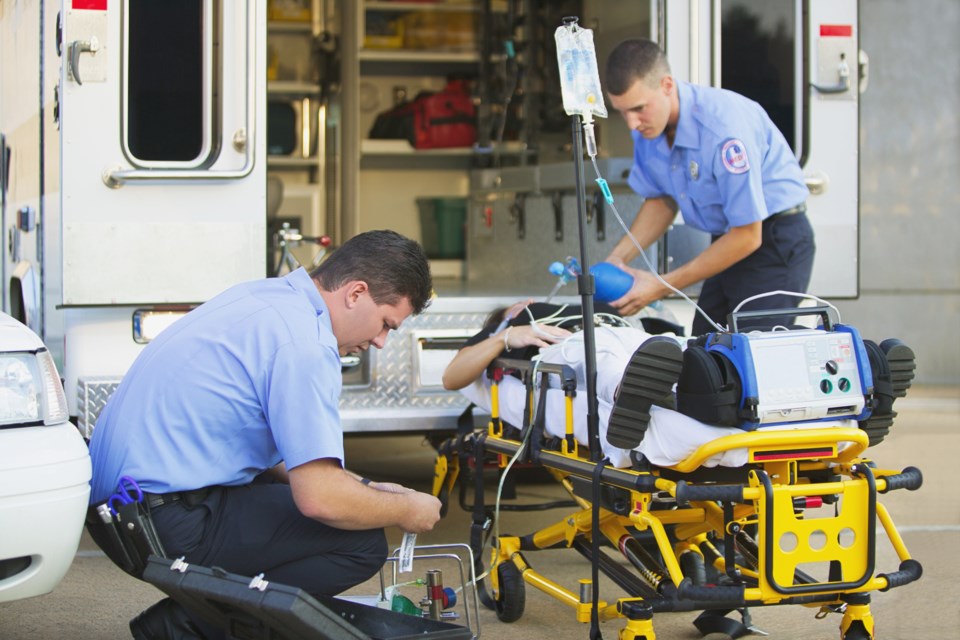LAKELAND - As Emergency Medical Services Week recognizes the work of EMS personnel across the country, Alberta politicians on the campaign trail are promising they have their backs.
Among the many campaign promises made in recent weeks, both the Alberta NDP and the UCP maintain emergency medical services are on their priority lists should they form the next government.
“Albertans need to trust that when they call 911 in an emergency, dispatch will answer and an ambulance will be there within minutes,” David Shepherd, Alberta NDP candidate for Edmonton-City Centre and Health Critic, said Wednesday. “And they need to trust that when they get to the hospital, they’ll be seen fast. Under the UCP, Albertans don’t have that trust.”
The NDP is pledging to add 16 community paramedic units across Alberta, eight of which would be outside of the major centres of Edmonton and Calgary. Over four years, the NDP claims the units will support an estimated 18,000 visits for Albertans and result in “$20 million of avoided costs in reduced ER visits, EMS transport and acute care stay, ” providing care from suturing to lab work without the need for a hospital visit.
The NDP plan also cites recruitment and retention measures including “dispatch improvements, up to $10,000 in signing bonus, and more training spaces so there are more paramedics to support Albertans,” according to a party media statement. More opportunities for career advancement and upgrading qualifications are also promised.
The UCP says its government has made great strides in addressing emergency response times in recent months.
“Alberta’s front-line health care workers do amazing work, and we need to help them be able to do that work. We also need to make sure Albertans have access to the health care they need, when and where they need it. That’s why we embarked on some really ambitious plans to make meaningful changes to our health care system. And it’s working,” Premier Danielle Smith in late April. “I’m thrilled to see response times and wait times are already trending in the right direction.”
Health Minister Jason Copping maintained EMS response time have been “significantly reduced” as a result of establishing a 45-minute Canadian standard target for emergency department patient handover, using alternative methods for inter-facility transfer when an ambulance is not required, and directing non-urgent calls from 911 to 811/Health Link as appropriate in an non-emergency situation.
“Our EMS paramedics are arriving quicker, our ambulances are staying in their home communities more, and families are seeing their loved ones receive cardiac, pediatric and cancer surgeries faster. This is clear progress and improvement as we build a better health care system for all,” Copping said.
Alberta Health reported a 38 per cent improvement in response times in Calgary, a 25 per cent improvement in Edmonton and 33 per cent improvement in smaller communities. It also said the frequency of red alerts, where there is no immediately available EMS to respond to an emergency.
AHS has said 457 new EMS staff members were hired last year, including 341 paramedics.
In March of this year, the Health Sciences Association of Alberta (HSAA) strongly urged the government to address what it described as an “EMS crisis” on several fronts.
“Albertans need to know how dangerous these jobs are. It is unacceptable that over one in four paramedics were injured on the job last year. Government must show its quick fixes are not at the expense of the health safety of paramedics and emergency communications officers,” HSAA noted in a statement.
HSAA, the union which represents an estimated 29,000 paramedical technical, professional and general support employees in the province’s public and private health-care sector, recommended response times be measured from the time a call is made to the arrival at the scene. The association also requested the release of daily numbers showing unfilled shifts and dropped ambulances and proof that working conditions are improving for the workers.
According to injury statistics, in the fiscal year 2021 to 2022, 28 per cent of full-time equivalent EMS staff were off or on modified work arrangements, which translates into an EMS professional having more than a one in four chance of being injures at work during a year, according the HSAA.



